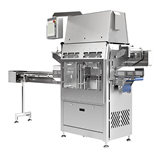CSIRO
Deep inside the Sydney Opera House, beneath the iconic sails and behind the stages and orchestra pits, lies a maze of ducts, pumps, pipes and cabling that runs for kilometres.
This inner structure is the unseen side of one of the world’s most famous buildings – vital ‘organs’ like air-conditioning, lights and water supply that only get noticed when they fail.
Paul Akhurst, the Opera House’s Director of Facilities, says his maintenance and cleaning budget is about A$20 million a year, or a third of total operating costs.
“One of the benefits of the project will be a mechanism by which one-off buildings can take standard benchmarks and apply them to their situation.”
His responsibilities cut across utilities like air-conditioning and electricity, as well as the upkeep of theatre systems and the building structure itself.
So where better to study the inner workings of the built environment, and to test improved facilities management techniques that could be rolled out to other buildings across Australia?
Facilities management technologies
The facilities management industry in Australia is attempting to lift its profile and improve its ability to add value to buildings. Put simply, it is tired of facilities management being seen only as a cost rather than as an opportunity.
The first stage of the work is to look at digitising the Opera House’s paper-based plans, and to electronically integrate the processes of facilities management with the Opera House’s day-to-day operations.
For example, if a particular air-handling unit needs repair, a properly designed digital monitoring system will be able to flag how that unit will affect other systems in the building, and also whether its failure will affect concert performances or rehearsals.
Another part of the project will examine benchmarks to help determine how facilities management at the Opera House compares with other buildings around the world.
‘Because we are an iconic building, it is quite hard to know how well we are doing compared to elsewhere,’ said Akhurst.
‘The facilities management industry has a range of benchmarks, but they are geared to standard buildings like office blocks or hospitals. One of the benefits [of this project] will be a mechanism by which one-off buildings can take standard benchmarks and apply them to their situation.’
A third stream of work will examine ways to improve the procurement of services such as maintenance, cleaning and catering.
Historically tenders are awarded to the cheapest bidder, but this does not always guarantee the best value for money.
When completed, the findings of the Opera House study will be available to the wider facilities management industry.
Economic and social benefits
Karen Hill, chief executive of the Facility Management Association of Australia (FMA), says facilities management is no longer just about minimising costs: ‘It is about how people work and how they can get the most out of buildings.’
The FMA estimates facilities management in this country is an A$8.6 billion-a-year industry, employing 135,000 people directly and a further 37,000 indirectly.
Hill says the project will strategically position facilities management at a higher level – not just at the level of building maintenance.
Collaboration
The project is a collaboration of the construction industry (including heavyweights like Bovis Lend Lease and John Holland), state and local governments, universities and CSIRO, organised within the Cooperative Research Centre for Construction Innovation.











